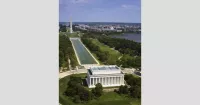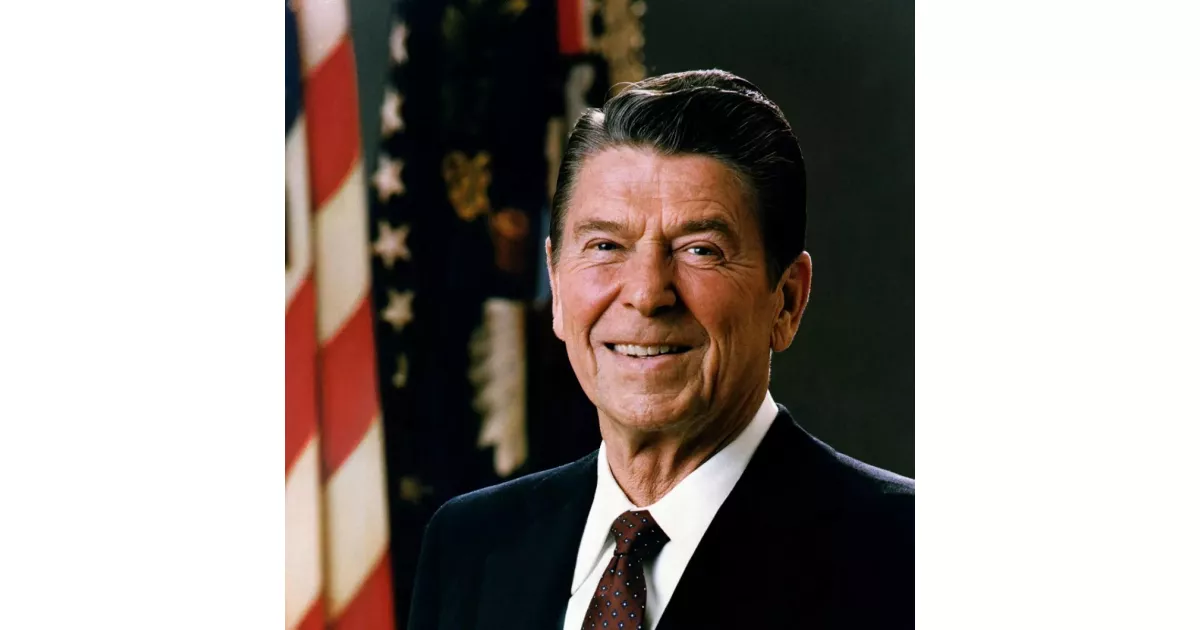A closer look at the biggest achievements of Ronald Reagan. Awards, milestones, and records that define success.
Ronald Reagan, the 40th U.S. President (1981-1989), was a pivotal figure in the American conservative movement. A Republican, he implemented supply-side economics, dubbed "Reaganomics," which aimed to reduce government spending and taxes to stimulate economic growth. Reagan strengthened the military, challenged the Soviet Union, and is credited by some with helping to end the Cold War. Domestically, he faced challenges like the AIDS epidemic and the Iran-Contra affair. Before his presidency, he was a Hollywood actor and Governor of California.
1952: Republicans won a majority of seats in the Senate
On November 4, 1980, Republicans won a majority of seats in the Senate for the first time since 1952 while Democrats retained the House of Representatives.
1964: Gave speech for Barry Goldwater
In 1964, Reagan gave a speech titled "A Time for Choosing" for presidential contender Barry Goldwater, which, although not enough to turn around Goldwater's campaign, significantly increased Reagan's profile among conservatives.
1973: Budget surplus
By 1973, the budget had a surplus, which Reagan preferred "to give back to the people".
November 4, 1980: Won presidential election
On November 4, 1980, Reagan won a decisive victory in the Electoral College over Carter, carrying 44 states, also winning the popular vote by a narrower margin.
1980: Victory in Presidential Election
In 1980, Ronald Reagan won the Republican Party's nomination and the presidential election against Jimmy Carter.
January 20, 1981: Inaugurated as President
On January 20, 1981, Reagan was inaugurated as the 40th president of the United States, commenting on the country's economic malaise and stating that "government is not the solution to our problem, government is the problem".
March 30, 1981: Assassination Attempt
On March 30, 1981, Reagan was shot by John Hinckley Jr. outside the Washington Hilton. He underwent surgery and recovered quickly, and the event created a bond between him and the American people.
1981: Appointment of Sandra Day O'Connor
In 1981, Reagan appointed Sandra Day O'Connor as Associate Justice to the Supreme Court, fulfilling a campaign promise to name the first female justice to the Court.
1983: End of Recession
In 1983, the recession ended.
1984: Reagan's approval rating nears 60%
By mid-1984, Ronald Reagan's approval rating neared 60 percent after his ratings rebounded following the invasion of Grenada.
1984: Re-election as President
In 1984, Ronald Reagan won a landslide victory in the presidential election, defeating Walter Mondale.
1987: Approval Ratings Recover
In mid-1987, Ronald Reagan's approval ratings began to recover after declining during the Iran–Contra scandal.
May 1988: U.S. Senate ratifies the Intermediate-Range Nuclear Forces Treaty
In May 1988, the U.S. Senate overwhelmingly voted in favor of ratifying the Intermediate-Range Nuclear Forces Treaty, giving Reagan's popularity a major boost.
1991: Ronald Reagan Presidential Library Opens
In 1991, the Ronald Reagan Presidential Library opened.
Mentioned in this timeline

Martin Luther King Jr was a pivotal leader in the...
California is a U S state on the Pacific Coast...

The stock market serves as a platform where buyers and...
The Union of Soviet Socialist Republics USSR existed from to...

Washington D C is the capital city and federal district...
Africa is the second-largest and second-most populous continent comprising of...
Trending

2 months ago Draymond Green confronts fan over Angel Reese taunts during Warriors-Pelicans game.

6 months ago Scarlett Johansson Kisses Jonathan Bailey at Premiere, Colin Jost Present.

Dame Emma Thompson is a highly acclaimed English actress and writer with a career spanning over years Her exceptional talent...
8 months ago Milan Defeats Bologna 3-1 with Gimenez's Brace and Pulisic's Goal in Serie A
Katherine Barrett Wilson is an American progressive activist community organizer and writer As the co-founder and executive director of the...

The iPhone e is an affordable smartphone in Apple's iPhone series part of the eighteenth-generation line-up Announced on February it...
Popular

Stranger Things created by the Duffer Brothers is a popular...

XXXTentacion born Jahseh Dwayne Ricardo Onfroy was a controversial yet...

Kelsey Grammer is an accomplished American actor producer and singer...

Candace Owens is an American conservative political commentator and author...
Turning Point USA TPUSA is an American nonprofit organization founded...

Bernie Sanders is a prominent American politician currently serving as...
